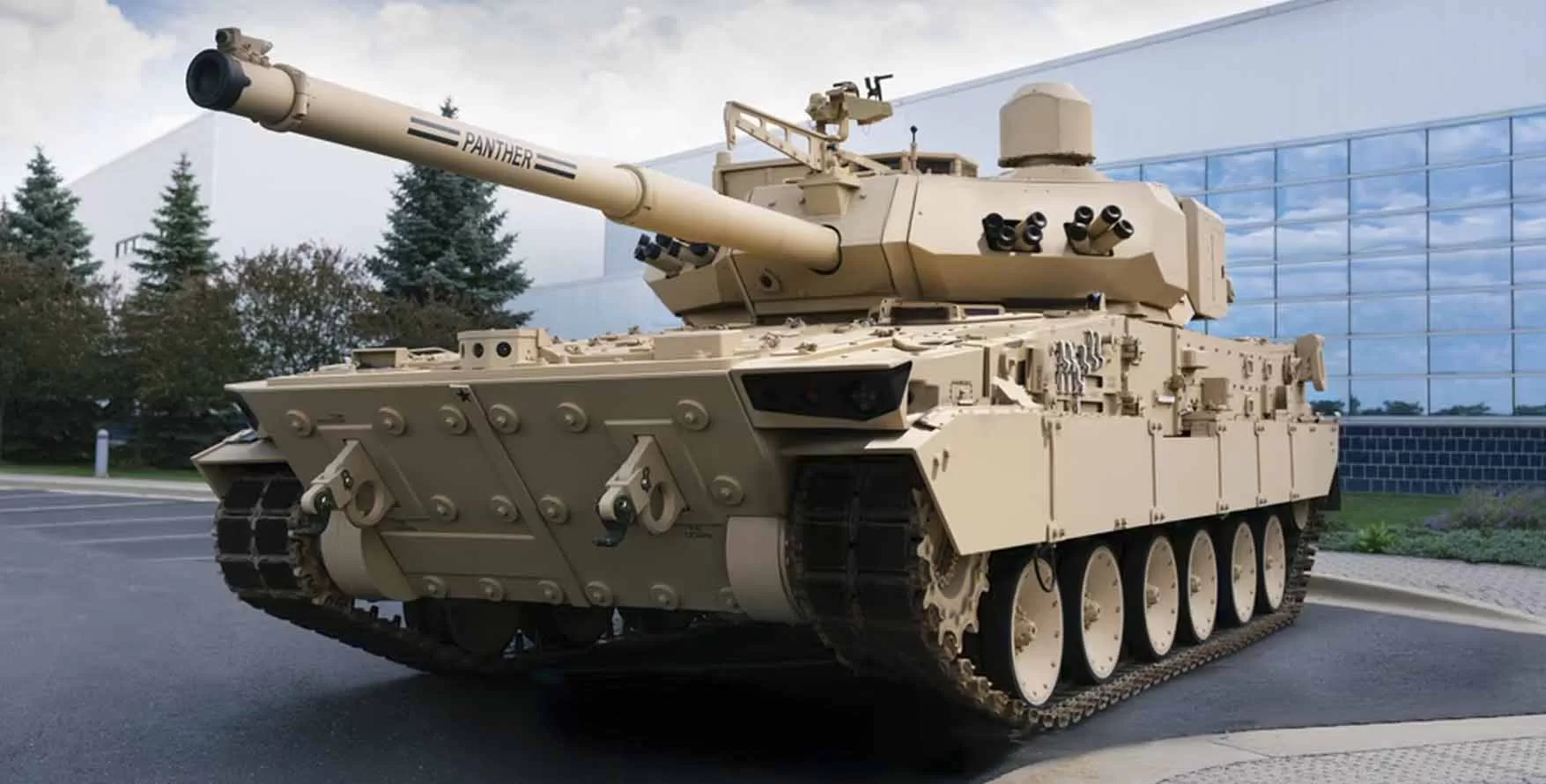In a major advancement for U.S. Army’s Infantry Brigade Combat Team (IBCT), General Dynamics Land Systems (GDLS) has designed and developed a new tracked combat vehicle, the M10 Booker, formerly known as the Mobile Protected Firepower (MPF). This new addition to the military’s arsenal is set to enhance the flexibility, mobility, and overall combat capabilities of the IBCT, the Army’s basic deployable unit of maneuver.
Related Article:
Reports surfaced in 2016 indicating the Army’s interest in developing a light ground combat vehicle to bolster the relevance of IBCTs during significant combat operations against a comparable adversary. Originally termed as a “Light Tank”, the Army rebranded the innovative concept as the Mobile Protected Firepower to prevent troops from mistaking it for a traditional tank and using it like the M1 Abrams Main Battle Tank (MBT).
The M10 Booker has been introduced to fill a capabilities gap left by the retirement of the M551 Sheridan Armored Reconnaissance/Airborne Assault Vehicle. Despite some technical issues, the M551 Sheridan was widely regarded for its robust operational capacities.
In June 2023, a significant contract worth $1.14 billion was awarded to GDLS by the U.S. Army for the production and deployment of up to 96 MPF vehicles. The Army Acquisition Objective (AAO) for MPF has been set at 504 vehicles, allocating 14 MPFs per IBCT. The First Unit Equipped (FUE) is targeted for fielding in the Fiscal Year (FY) 2025. The emergence of the M10 Booker as a new combat vehicle brings a paradigm shift in military operations, further reinforcing the operational potency of the U.S. Army.
Named the M10 Booker, the vehicle pays homage to two soldiers who made the ultimate sacrifice, one in the Iraq War and another in World War II. Staff Sgt. Stevon A. Booker lost his life during the ‘thunder run’ in Baghdad, Iraq, on April 5, 2003. Pvt. Robert D. Booker was killed amidst heavy machine gunfire in Tunisia on April 9, 1943, during WWII. Stevon Booker, a tanker, and Robert Booker, an infantryman, were awarded the Distinguished Service Cross and the Medal of Honor posthumously, respectively.
Technical Overview
| Armament |
| The main armament of the M10 Booker MPF consists of one 105mm cannon based on the American M35 and a 7.62mm machine gun mounted coaxially. The 105mm cannon can fire APDS (Armour-Piercing Discarding Sabot) and HE (High Explosive) rounds with a maximum firing range of 1.8 km for APDS and 4 km for HE. The APDS is a type of spin-stabilized kinetic energy projectile for anti-armor warfare. The main gun is loaded manually. One 12.7mm heavy machine gun is mounted on the commander hatch. Two banks of four smoke grenade launchers are mounted on each side at the front of the turret. |
| Design and protection |
| The design of the M10 Booker MPF light tank is conventional with the driver and engine at the front and the turret located at the rear of the hull. The turret accommodates a crew of three including a commander, gunner, and loader. The turret architecture is based on the M1 Abrams tank using the M1A2 Sep V3 fire control system and CITV (Commander’s Independent Thermal Viewer). The vehicle incorporates components and systems from the ASCOD armored tracked vehicle platform fully designed and developed by GDELS (General Dynamics European Land Systems). The M10 Booker vehicle is fitted with additional armor panels and under-vehicle protection against improvised explosive devices (IEDs). For the safety of the crew, it also incorporates a tested compartmentalization system for ammunition storage. |
| Mobility |
| The M10 Booker MPF is powered by a state-of-the-art MTU diesel engine developing 800 hp and Allison transmission system, offering a superb power-to-weight ratio and hydro-pneumatic suspension. This grants soldiers exceptional speed and adaptability in cross-country navigation. It can run at a maximum road speed of 65 km/h (40mph) and has a maximum road range of 305 km (190 miles) and can operate for 24 hours off the ramp or on arrival at the drop zone. It can move over steep hills, valleys, cities, and rivers. The vehicle is fitted with the Allison 3040 MX™ cross-drive transmission system, specifically engineered to facilitate propulsion, steering, and braking in medium-tracked combat vehicles. The M10 Booker is equipped with a hydro-pneumatic suspension developed by the company Horstman Group that uses high-pressure nitrogen gas and an integral oil damper that are all contained within the road arm. The suspension consists on each side of six road wheels, a drive sprocket at the front, and the idler at the rear. |
| Combat Equipment |
| The M10 Booker MPF is equipped with the Safran Optics 1’s PASEO Commander’s Independent Tactical Viewer (CITV) long-range panoramic targeting sight. It increases the situational awareness capabilities of armored and surveillance vehicles in all combat scenarios (stationary and on-the-move) even at high speeds. It is an advanced panoramic sight to improve the survivability and fighting capabilities of IFV (Infantry Fighting Vehicles) and MBT (Main Battle Tanks). |
Technical Specs
| Armament | Armor |
| One 105mm cannon, one 7.62mm coaxial machine, and one 12.7mm machine gun | Protection against the firing of small arms, artillery shell splinters, and IEDs (Improvised Explosive Devices) |
| Country of Use | Weight |
| United States | 38,000 kg | 83,776 lbs. |
| Country of Origin | Speed |
| United States | 65 km/h | 40 mph |
| Combat Equipment | Range |
| Computerized firing control system, panoramic sight, day and night vision, NBC protection system | 305 km | 190 miles |
| Crew | |
| 4 |





